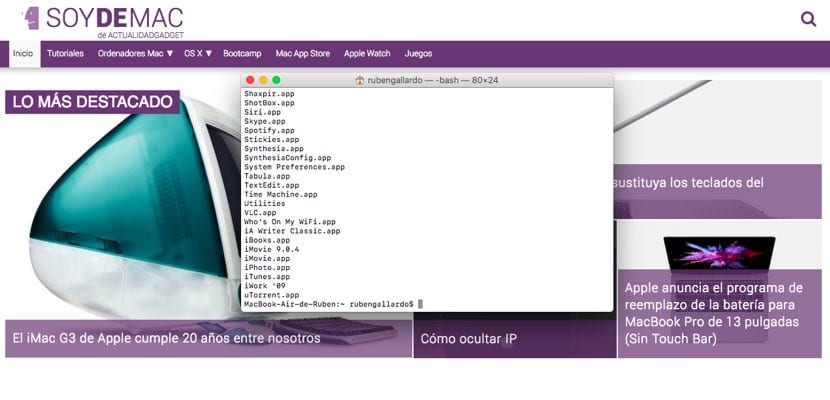
It is very possible that you will change Macs in no time. And the list of applications that you have installed is quite large. Perhaps it is time to make a compilation of all of them and keep them safe to know what to install on your new computer when the occasion arises. We will give you two options - using Terminal - to generate a complete list of applications installed on your Mac and be able to copy them into a TXT, DOC or PDF document. Of course, save it on an external hard drive or in a cloud service (iCloud Drive, Dropbox, Google Drive, etc.) to be able to access the list whenever you want.
It can also be a way to keep track, always thinking about dates, to see what your changes have been over time: what applications have you installed again; what apps have you deleted since then; which of them is the most veteran. Also, as we mentioned at the beginning, it's a simple way to keep track and know what apps you had installed on your old Mac before being replaced by a new one.
Generating a list of applications installed on the Mac through «Terminal»

We have already told you that one of the easiest ways to obtain the complete list of applications installed on your Mac is to make use of «Terminal» that you will find in the following path: Finder> Applications> Utilities. Once you launch the app, you must write —or copy and paste— the following command:
ls / Applications /
In this way you will get a complete list of applications installed on your computer generated. Now is the time to copy and paste into an external document to keep it safe.
Obtaining the complete list of apps installed on your Mac using "Terminal" and with details

The next option that we leave you is to obtain the same list as before but with details that you could not see before. In this case you will be provided with data such as the date you installed the application, what is the visible name in the applications folder or who was - the user - in charge of its installation on the computer. To get this detailed list you must write the following in Terminal:
ls -la / Applications /